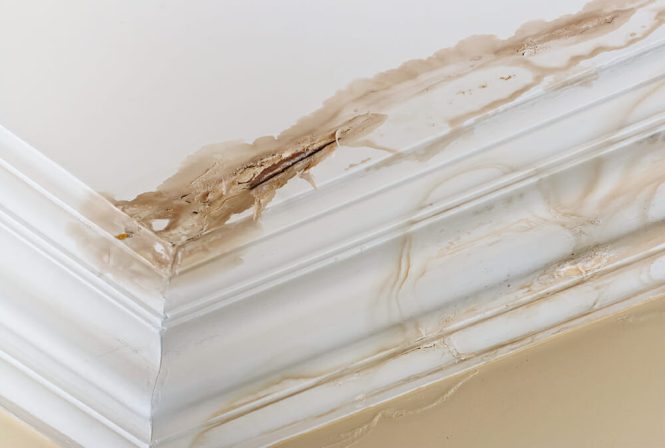

Roof leaks are a pervasive problem, leading to extensive water damage and costly repairs for homeowners. Identifying and addressing these leaks promptly is crucial for maintaining a safe and dry living environment. This comprehensive guide explores various causes, signs, and solutions for roof leaks, providing step-by-step instructions to help you find and fix them now! We’ll cover everything from basic leak detection to more complex repairs and preventative measures, helping you navigate this common home maintenance issue. This article is structured as follows: first, we’ll define roof leaks and their potential damage; then, we’ll delve into the common causes of roof leaks; we’ll discuss the visible and hidden signs of leaks; and finally, we’ll provide actionable solutions and preventative strategies.
Understanding Roof Leaks and their Damage
Roof leaks are a significant concern for homeowners, potentially causing extensive water damage to the interior of the house. Water damage can lead to mold growth, structural damage, and costly repairs. Ignoring a small leak can quickly escalate into a major problem, affecting not only your home’s structural integrity but also your family’s health and comfort. Water intrusion can compromise the integrity of building materials like drywall, wood framing, and insulation, leading to potentially expensive fixes down the line. Early detection and swift action are vital to limiting the damage and cost involved. Understanding the potential consequences can motivate homeowners to take swift action. This knowledge is essential for making informed decisions about leak prevention and repair.
Common Causes of Roof Leaks
Roof leaks can be traced to various issues, from simple wear and tear to more complex structural problems. Poor installation, improper maintenance, and age-related deterioration are significant factors to consider. Issues with flashing, damaged shingles, improper venting, or improper sealant application can also lead to leaks. Furthermore, tree branches overhanging the roof, or damage caused by hailstorms, are common causes. These examples highlight the importance of regular roof inspections and prompt maintenance. Timely intervention helps avoid costly repairs and structural issues. It’s vital to identify the root causes of the leak to ensure a lasting solution, avoiding future recurrence.
Visible Signs of Roof Leaks
Identifying visible signs of roof leaks is a crucial step in prompt repair. Water stains on ceilings or walls are obvious indicators. Look for damp or discolored spots within the house or around the exterior walls of your home. Mold or mildew growth, especially in areas near the roof or walls, can be another sign. Additionally, dripping water from the roof during rain or unusual moisture near the roofline could be a major indicator. Recognizing these visible signs can help you pinpoint the location and severity of the leak, facilitating a timely and effective repair process. Furthermore, inspect gutters, downspouts, and the immediate surroundings of the roof. If you notice water pooling, overflowing or not draining properly, it can point towards a leak.
Hidden Signs and Advanced Leak Detection
While visible signs are helpful, sometimes roof leaks manifest as hidden issues. Unexpectedly high water bills or consistently damp basements could be subtle indicators of a leak somewhere. Sounding from the roof or the attic could be another sign of a developing leak. In these cases, professional leak detection tools and expertise can aid in finding the precise source of the problem. Specialized techniques like thermal imaging or moisture meters can locate hidden water damage, allowing you to address the problem at its source. Often, it’s necessary to enlist the help of a qualified roofing contractor for efficient leak detection and efficient repairs.
Repairing and Preventing Future Roof Leaks
Once you have identified the source of the leak, effective repair is critical. Minor leaks, like a damaged shingle, can often be fixed with replacement. Larger issues, such as flashing problems, necessitate the expertise of a professional roofer. Maintaining a regular roof inspection schedule and prompt maintenance can significantly reduce the risk of leaks. Address issues promptly to prevent further damage and costly repairs. Ensure gutters and downspouts are functioning correctly to divert water away from the house. Regularly cleaning gutters can help maintain proper water flow. Prevention is key to maintaining a watertight home, safeguarding your investment and ensuring comfort.
Frequently Asked Questions
What are the most common causes of roof leaks?
Common causes include damaged shingles, worn-out flashing, improper sealant application, and issues with gutters and downspouts. Tree branches overhanging the roof can also contribute to roof damage. Inspecting your roof regularly and addressing potential issues promptly can significantly reduce the likelihood of leaks. Thorough inspections can reveal the source of the problem and prevent potential issues.
How can I detect hidden roof leaks?
Hidden roof leaks can manifest as high water bills, damp basements, or unusual moisture in areas near the roofline. Unexpectedly high water bills or unusual dampness around the house should trigger an investigation. Professional leak detection tools and expertise are valuable in identifying the exact source of the problem. Often, it’s essential to enlist a qualified roofing contractor for proper leak detection and efficient repairs.
Roof leaks are a common homeowner headache, but with a methodical approach and attention to detail, you can effectively prevent and resolve them. Understanding the causes, recognizing the signs, and taking proactive measures are crucial steps in maintaining a dry and safe home. This guide has covered the essential steps from identification to repair, offering valuable insights to homeowners. Now, equip yourself with the knowledge and tools to tackle any leak issue that arises. Contact a qualified professional for more complex repairs and follow up on maintenance schedules to prevent future issues.